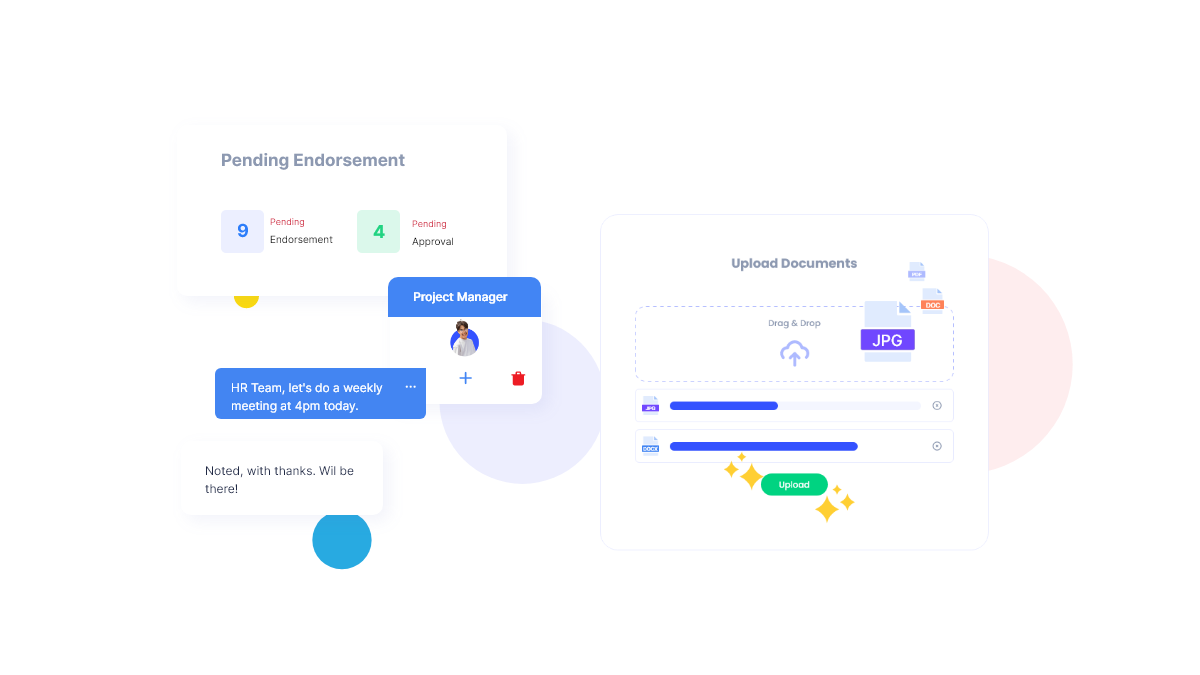 Introduction
Introduction
In today’s digital-first economy, businesses are under relentless pressure to deliver tech-driven solutions faster than ever. Yet while demand for applications continues to skyrocket, IT departments are buckling under the weight of resource shortages, legacy systems, and mounting backlogs. The global tech talent crunch isn’t helping: a 2023 McKinsey report revealed that 87% of companies are either already experiencing or anticipating a skills gap in the next few years.
Enter the citizen developer—a new kind of problem-solver reshaping how software gets built. Armed with intuitive low-code and no-code platforms, these business users are creating workflows, apps, and automations without writing a single line of code. This shift isn’t just a technological evolution—it’s a cultural one. It redistributes creative power, speeds up delivery, and reduces dependency on overburdened IT teams.
But what happens to those IT teams in the process? Do they lose control—or gain leverage?
Platforms like Planally, a no-code workflow automation tool, are enabling this new wave of builders while offering IT teams oversight, governance, and scalability. The key lies in how organizations respond to this quiet revolution.
Who Exactly Is a Citizen Developer?
A citizen developer is typically a non-technical employee—think HR managers, finance analysts, or marketers—who uses no-code or low-code platforms to build internal tools, automate workflows, or solve department-specific problems. They’re not software engineers by training, but they know their processes inside out. And that makes them uniquely positioned to build highly relevant, nimble solutions.
Imagine an HR manager creating a streamlined onboarding tracker or a marketing executive automating campaign reporting—all without waiting weeks for IT’s support. These are not hypothetical scenarios. According to a 2023 Gartner report, by 2026, 80% of technology products and services will be built by people outside traditional IT roles.
 Citizen developers aren’t operating in a vacuum—they often collaborate with IT teams to ensure security and compliance. This proximity to IT, combined with business acumen and real-time access to easy-to-use tools, gives them legitimacy as strategic contributors to digital transformation.
Citizen developers aren’t operating in a vacuum—they often collaborate with IT teams to ensure security and compliance. This proximity to IT, combined with business acumen and real-time access to easy-to-use tools, gives them legitimacy as strategic contributors to digital transformation.
Done right, citizen development doesn’t just reduce strain on IT—it enhances it. Tools like Planally make it possible to automate any workflow across departments, while still giving IT the control they need.
Why They’re Booming Now
Shortage of Developers
The global shortage of skilled software developers has become a significant bottleneck for digital transformation. Nearly 87% of organizations are already experiencing gaps in tech talent, especially in software engineering. With increasing demand for applications—and fewer professionals to build them—organizations are turning to citizen development as a practical workaround. Non-technical professionals, empowered by intuitive platforms, are stepping in to fill the void.
Maturity of No-Code Tools
Today’s no-code platforms are far from basic. They offer enterprise-grade capabilities that support security, scalability, and integration—making them safe for business-critical use. These tools are no longer fringe experiments but legitimate solutions. Platforms like Planally enable business users to build and deploy secure, scalable workflows without writing a single line of code. Whether it’s automating procurement or streamlining approvals, Planally helps organizations digitize processes without burdening the IT backlog.
Need for Agility + Cost Control
Speed and cost-efficiency have become non-negotiable in today’s business environment. Companies need to pivot quickly, launch faster, and do more with less. Traditional IT models—often slowed by long queues and legacy processes—can’t always keep up. No-code empowers frontline teams to build what they need, when they need it. As a result, businesses reduce their dependency on expensive outsourced development and respond to changing demands in real time.
With Planally, teams can automate any workflow—from employee onboarding to customer feedback loops—without waiting weeks for IT. The result? Faster outcomes and fewer bottlenecks.
The Impact on IT Teams: Opportunity + Chaos
The Upside
 Less Backlog
Less Backlog
Citizen developers reduce the number of routine requests IT needs to handle. This frees up internal tech teams to focus on strategic initiatives, infrastructure optimization, and security architecture—rather than building one-off tools.
Faster Innovation
When departments can prototype and iterate on their own, innovation accelerates. Business units don’t need to wait for full-cycle software delivery to test ideas—they can build, test, and adapt at speed.
Cost-Efficiency
Developing internal tools with citizen developers significantly cuts costs. It eliminates the need to hire external vendors or expand dev teams just to keep up with operational needs. This approach can reduce app development costs by up to 70%.
Improved IT-Biz Alignment
With citizen developers owning more of their workflows, IT becomes less of a gatekeeper and more of a strategic partner. Collaboration deepens. Teams align around outcomes, not just tickets.
Greater Agility
Business requirements evolve fast. Citizen developers give companies the responsiveness they need—whether it’s a shift in customer behavior or new compliance mandates.
The Catch
Security + Compliance Risks
Without a proper governance model, citizen development can introduce vulnerabilities. Data may be exposed, apps may be non-compliant, and risks may go unnoticed until it’s too late. IT needs to implement oversight mechanisms that don’t stifle innovation.
Shadow IT & Data Fragmentation
If citizen-developed apps aren’t integrated into the organization’s IT ecosystem, they become part of “shadow IT”—systems built and maintained outside of central control. This leads to fragmented data, duplicate workflows, and support nightmares.
Support + Maintenance Challenges
Apps built by non-technical staff may lack long-term maintainability. They might not scale, integrate well, or hold up under increased usage. Eventually, IT may need to take over, leading to unexpected workloads and frustration.
What Smart IT Leaders Should Do Now
The rise of citizen developers isn’t a passing trend—it’s a structural shift in how modern organizations build and scale digital capabilities. For IT leaders, the challenge isn’t to resist this movement, but to reshape their role in it.
 Establish Guardrails, Not Roadblocks
Establish Guardrails, Not Roadblocks
Governance doesn’t have to mean restriction. It’s about enabling business-led development within a secure, standardized framework. Smart IT teams implement clear policies that track app ownership, monitor usage patterns, and enforce compliance without slowing down innovation.
According to Deloitte’s 2024 Tech Trends report, organizations that succeed with no-code adoption build governance into the fabric of their digital strategy—treating it as a shared responsibility between IT and business units.
Establishing an internal review process, automating audit trails, and creating a centralized dashboard for all citizen-built apps are just a few examples of how to strike the right balance between control and creativity.
Champion Cross-Team Collaboration
When business users and IT professionals co-create, outcomes improve. Domain experts bring firsthand knowledge of workflows, while IT ensures scalability, integration, and security. Together, they can iterate faster and build smarter.
Gartner’s research emphasizes that successful digital transformation hinges on this model of fusion teams, where cross-functional collaboration blurs traditional boundaries and accelerates innovation. [source]
IT should position itself as an advisor—equipping business teams with reusable components, templates, and technical best practices, rather than acting as a bottleneck.
 Offer Enablement, Not Just Control
Offer Enablement, Not Just Control
Training is often overlooked—but it’s where most citizen development initiatives either scale or stall. IT leaders must invest in capability-building: internal bootcamps, documentation hubs, and office hours for non-technical teams.
By enabling business users with the right knowledge, organizations reduce rework and create a culture of secure, scalable development from the start. Companies that embed this kind of upskilling into their digital strategy are 2x more likely to achieve successful transformation outcomes.
Standardize on the Right Tools
Fragmentation is a silent killer of digital agility. When departments use disconnected tools, integration becomes a nightmare. IT should guide the organization toward using enterprise-grade platforms that are secure, extensible, and support joint development models.
No-code platforms like Planally exemplify this approach—allowing IT to stay in the loop while business users automate workflows with ease. This shared environment bridges the gap between speed and structure.
By consolidating development on scalable, compliant platforms, IT can reduce shadow tech risks while giving teams the freedom they need.
Looking Ahead: A New IT Mandate
The next era of enterprise IT won’t be defined by control—it will be defined by empowerment.
As more employees build their own tools, IT’s role must evolve from gatekeeper to enabler. This means providing the infrastructure, governance, and guidance that lets innovation happen at the edge—without compromising security or performance at the core.
 Business and technology are no longer separate conversations. They’re becoming inseparable. And tools like Planally are making that future possible—helping teams automate complex workflows, build smart processes, and do it all without writing code.
Business and technology are no longer separate conversations. They’re becoming inseparable. And tools like Planally are making that future possible—helping teams automate complex workflows, build smart processes, and do it all without writing code.
For IT leaders, now is the moment to lead this shift—not react to it.
Embrace the Shift—Don’t Compete With It
The rise of citizen developers isn’t a threat to IT—it’s a chance to evolve. By empowering business users with the right no-code tools, IT leaders can finally offload repetitive, time-consuming requests and focus on building the digital backbone that actually drives competitive advantage.
The key? Integration, not resistance. Rather than fighting the decentralization of app development, forward-thinking IT teams are embedding governance and security into platforms that work with their current tech stack—not around it.
If your organization is looking to automate workflows without drowning your IT team in tickets, it’s time to explore what Planally can do. Our no-code workflow platform enables any team to build, launch, and evolve processes—with security and scalability built-in.
👉 Request a demo to see how Planally can fit within your existing infrastructure and help your business move faster—with less friction.



